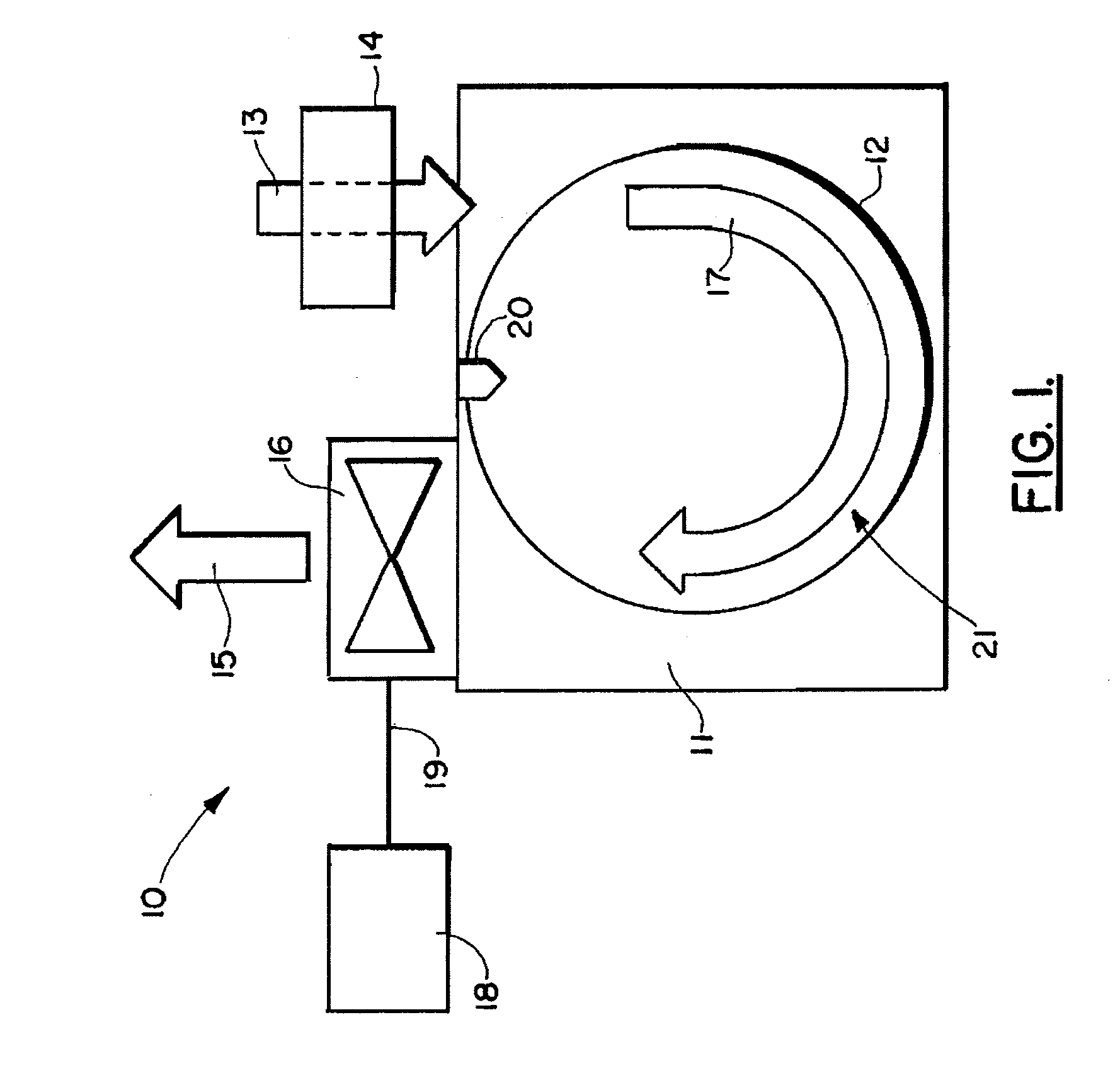Modulated air flow clothes dryer and method
a dryer and module technology, applied in the field of clothes dryers, can solve the problems of linen or textile damage, waste of energy, etc., and achieve the effect of reducing energy consumption, reducing drying time, and reducing waste of energy
- Summary
- Abstract
- Description
- Claims
- Application Information
AI Technical Summary
Benefits of technology
Problems solved by technology
Method used
Image
Examples
Embodiment Construction
[0018]FIG. 1 shows a preferred embodiment of the apparatus of the present invention, designated generally by the numeral 10. Clothes dryer apparatus 10 provides a dryer housing, frame, or chassis 11. The dryer housing, frame, or chassis 11 supports a drum 12 that can be a rotating drum. Dryer housing 11 provides an opening that can be closed with a door for adding previously washed, wetted textile articles such as clothes or linen to a drum 12 so that those wetted articles can then be dried. Textiles as used herein refers to any washable fabric article.
[0019]A main air inlet 13 enables air to enter a drying chamber 21 within drum 12. Heater 14 can be placed next to or upon frame 11 at main air inlet 13. In this fashion, heat transfer from heater 14 can be used to heat air that enters dryer chamber 21 via main air inlet 13.
[0020]A main air outlet 15 is provided for exhausting air from drying chamber 21. Suction blower 16 is placed in a position next to or attached to frame 11 as show...
PUM
 Login to View More
Login to View More Abstract
Description
Claims
Application Information
 Login to View More
Login to View More - R&D
- Intellectual Property
- Life Sciences
- Materials
- Tech Scout
- Unparalleled Data Quality
- Higher Quality Content
- 60% Fewer Hallucinations
Browse by: Latest US Patents, China's latest patents, Technical Efficacy Thesaurus, Application Domain, Technology Topic, Popular Technical Reports.
© 2025 PatSnap. All rights reserved.Legal|Privacy policy|Modern Slavery Act Transparency Statement|Sitemap|About US| Contact US: help@patsnap.com


